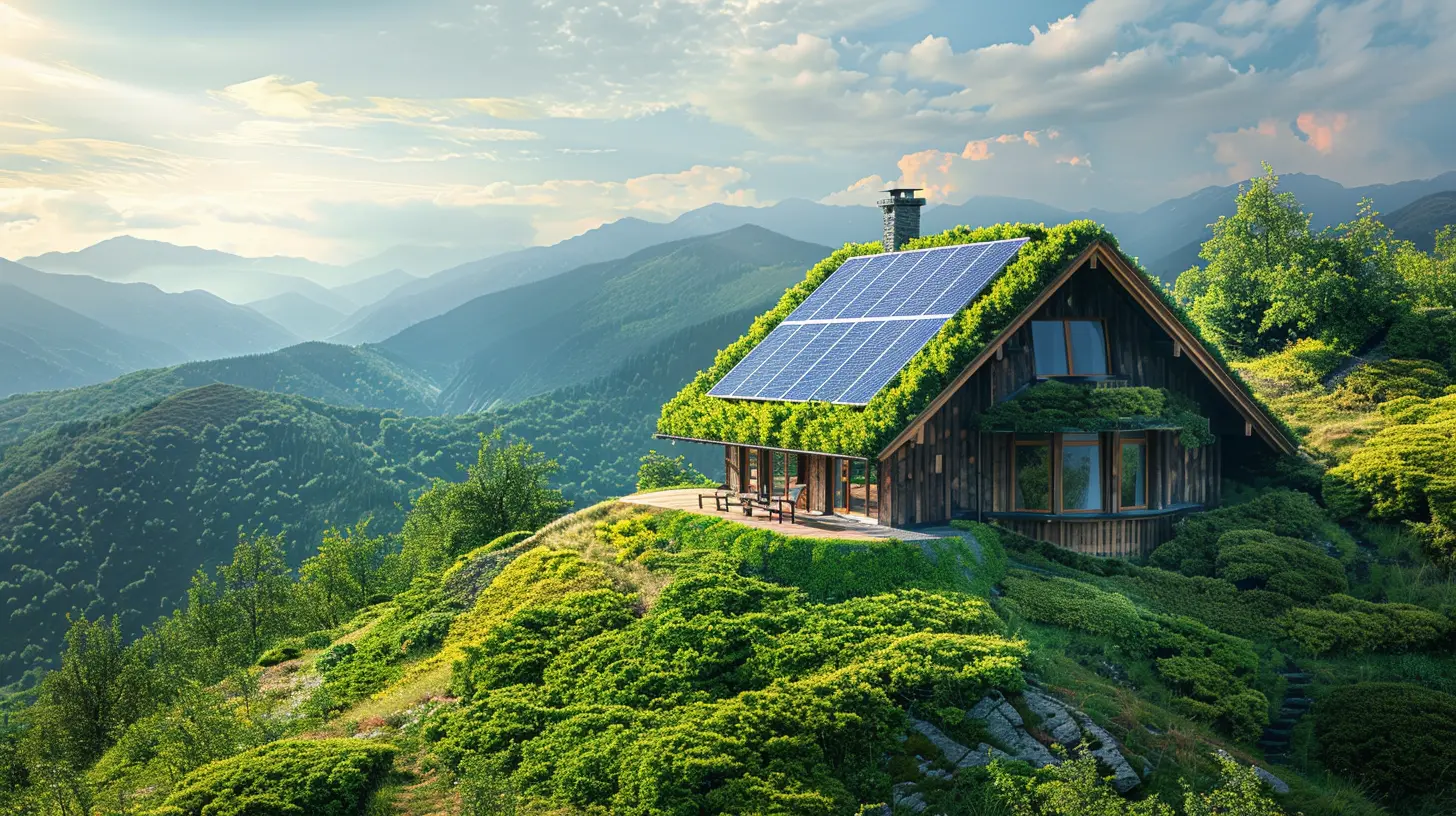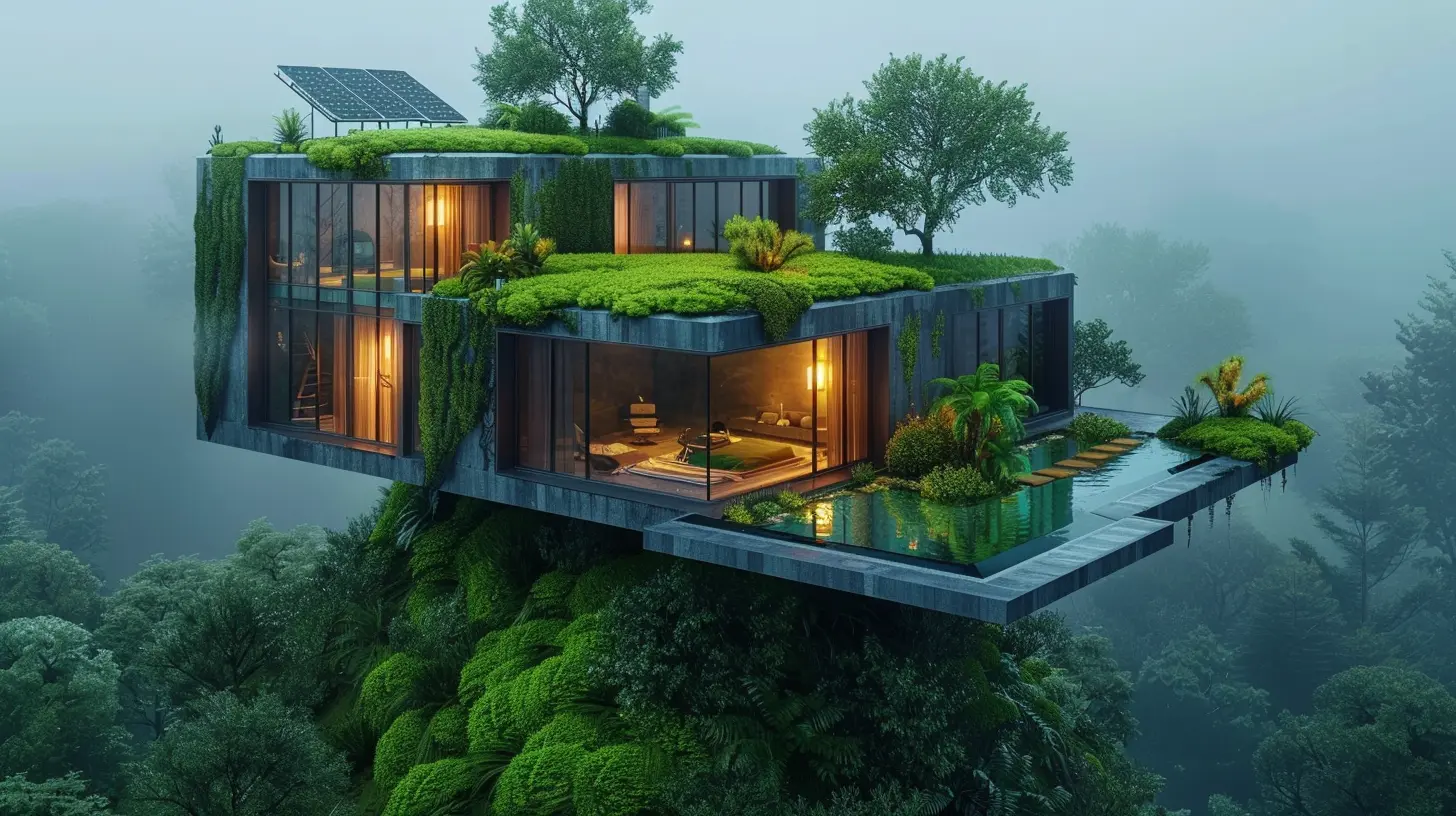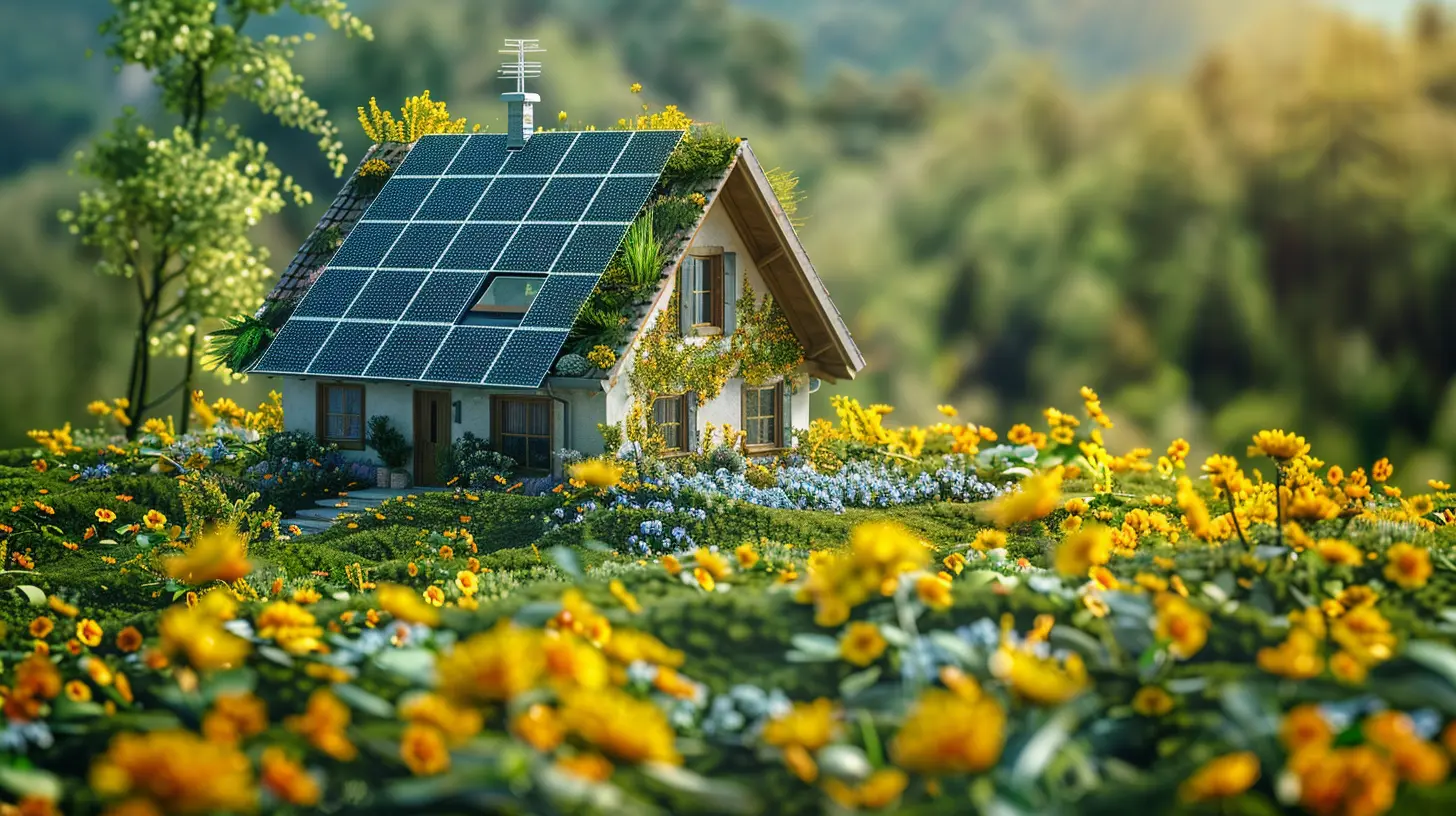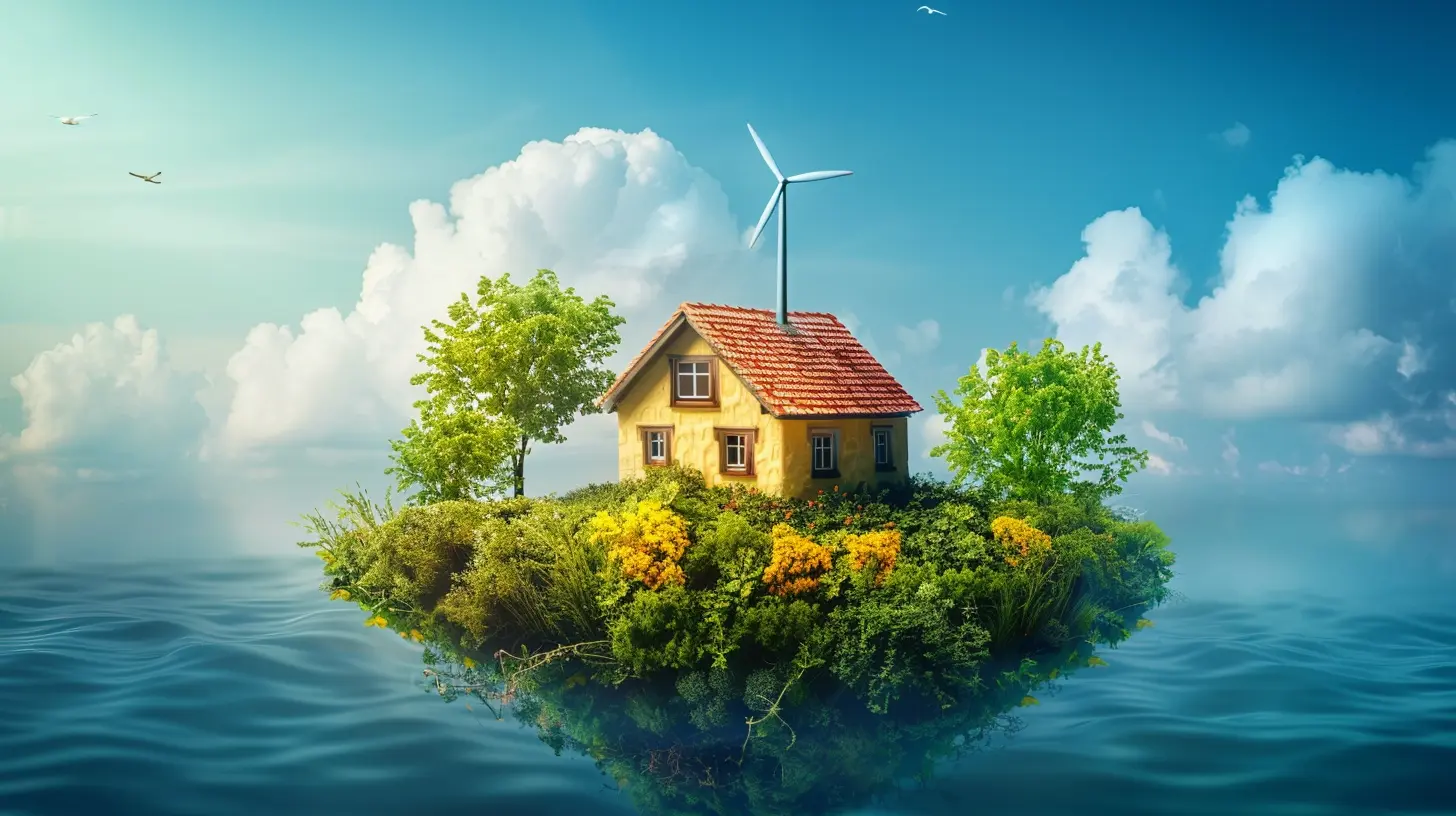Off-the-Grid Living: Embracing Green Technology for Independence
23 June 2025
Ever fantasized about ditching the 9-to-5, unplugging from the daily grind, and going completely off-grid? Imagine waking up to birds instead of buzzers, breathing clean air, and not giving a second thought to utility bills. Sounds dreamy, right? It’s not just the stuff of reality shows and survivalist blogs anymore. Off-the-grid living is gaining ground, and green technology is making it easier—and cooler—than ever.
If you've got that itch for independence and want to know how tech can fuel your off-grid dreams, buckle up! We're diving headfirst into the wild (but totally livable) world of off-the-grid living, with a green twist.
What Does Off-the-Grid Really Mean?
Let’s get one thing straight—off-the-grid doesn’t mean living like a hermit in a cave with nothing but a flashlight and a can of beans.In simple terms, “off-the-grid” refers to a lifestyle where you're not dependent on public utilities like electricity, water, gas, or sewage. You’re essentially your own mini-utility company. Self-reliant. Independent. A little rebellious—in all the right ways.
But don’t worry, we’re not talking medieval times here. With the rise of green tech, going off-grid is now more accessible—and eco-friendly—than ever before.
Why Are So Many People Going Off-Grid?
Great question. Let’s be real—modern life can feel overwhelming. Between rising utility costs, environmental concerns, and digital overload, a lot of folks are craving simplicity. Off-the-grid living offers the promise of:- Freedom – Be your own boss, especially when it comes to your home.
- Cost Savings – Say goodbye to monthly power bills.
- Sustainability – Reduce your environmental impact.
- Resilience – No more blackouts or water shortages ruining your day.
It’s about reclaiming control, doing more with less, and embracing new tech that supports a low-impact lifestyle. Sounds like a win-win, right?
Green Technology: The Heartbeat of Modern Off-Grid Living
Alright, here’s where it gets juicy. Off-the-grid living wouldn’t be nearly as comfortable without green tech. Think of it as the secret sauce, the friendly robot butler of sustainable independence.Let’s break down how today’s green gadgets and systems are making off-grid living both practical and totally livable.
1. Solar Power: The Sun Is Your New BFF
When you think of off-grid energy, what pops into your head? If it’s solar panels, you’re not wrong. Harnessing sunlight is basically the poster child of green tech.- Photovoltaic Panels (PV) – These babies soak up sunlight and convert it into electricity. Mount them on your roof or stick them on the ground—either way, the sun’s doing the heavy lifting.
- Battery Storage – Solar isn’t just for sunny days. With high-tech battery systems like Tesla’s Powerwall or the more budget-friendly Bluetti and EcoFlow units, you can store power for when the sun’s snoozing.
Feeling cloudy about solar? Don’t. Panels are more efficient and affordable than ever. And with the right setup, you can run everything from a toaster to a full-blown server rack (nerds rejoice!).
2. Wind Power: Let’s Hear It for the Breeze
Don’t let solar steal all the spotlight. If you're in a breezy area, wind power can be your off-grid sidekick.- Small Wind Turbines – These aren’t the giant spinning monsters you see on highways. Think of them more like sleek lawn ornaments with a purpose.
- Hybrid Systems – Pair wind and solar for that dynamic duo energy combo. When the sun goes down, the wind picks up. Yin and yang, baby!
Wind helps smooth out the energy supply, especially in climates where weather can’t make up its mind.
3. Micro-Hydro: The Unsung Hero
Got a stream or small waterfall nearby? You might have the goldmine of renewable energy—micro-hydro power.- Efficiency Levels – Micro-hydro is incredibly consistent compared to solar or wind. While the sun and wind show up when they feel like it, water is the friend that always calls back.
- Low Maintenance – Once installed, these systems just keep on keeping on with minimal fuss.
It’s like having a tiny hydroelectric dam in your backyard—without the environmental baggage.
4. Off-Grid Water Systems: Liquid Gold
You can survive weeks without Netflix, but not without water. An off-grid system means finding, collecting, purifying, and storing water—without a plumber on speed dial.- Rainwater Harvesting – Collect water from your roof and store it in tanks. Add a good filtration system and boom—you’re set.
- Wells – If you’re lucky enough to have access to underground water, a solar or wind-powered pump can keep the H2O flowing.
- Water Filtration – Think ceramic filters, UV systems, and even fancy bio-sand setups to keep your water clean and parasite-free.
Water is precious, so every drop counts. Don’t skimp on the tech here—your kidneys will thank you.
5. Composting Toilets: Less Gross Than You Think
Wait, don’t scroll! Hear me out. Composting toilets have come a long way, and they’re actually kinda cool.- No Plumbing Needed – These bad boys don’t require running water or sewage hookups.
- Eco-Friendly – They turn waste into compost, which you can use (safely!) for non-edible plants.
- Odor-Free – Yes, really. Modern designs come with ventilation and decomposition chambers that keep things fresh.
If you’re aiming to be fully self-sufficient, a composting toilet is a total game-changer. Say goodbye to septic stress.
Where You Live Matters—A Lot
Going off-grid in the Alaskan tundra versus sunny Arizona? Totally different ballgames.Climate, geography, local laws, and access to natural resources all play a huge role in designing your off-grid setup. Before you start blueprinting your eco-cabin, do a little recon. Some states and countries are super off-grid friendly, while others might throw a few legal curveballs.
(Pro tip: Check zoning laws and building codes before you start nailing solar panels to your roof.)
Tech That Keeps You Comfortable (and Sane)
Let’s face it—living off-grid doesn’t mean you have to live like a caveman. Unless you’re into that. But for most folks, comfort matters. That’s where smart green tech steps in.- Energy-Efficient Appliances – Look for low-wattage fridges, LED lighting, and DC-powered gadgets.
- Smart Home Systems – Yup, you can still run Alexa or Google Home off-grid with the right setup.
- Off-Grid Internet – Satellite services like Starlink are opening the floodgates for rural and off-grid connectivity. Work from the woods? Totally doable.
- Mobile Power Stations – Portable solar generators give you backup and mobility. Great for emergencies and spontaneous camping vibes.
The True Cost of Going Off-Grid: What's the Real Price Tag?
You might be wondering, “Is all this gonna cost me a kidney?” Well, yes and no.The upfront investment can be a bit steep, especially if you want top-tier gear. But here’s the kicker—you’ll likely save heaps in the long run.
Let’s break it down:
- Initial Costs
- Solar setup with batteries: $10,000–$30,000
- Wind turbine: $3,000–$5,000
- Composting toilet: $1,000–$1,500
- Water system: Varies (from DIY filters to pro-level rigs)
- Ongoing Costs
- Maintenance
- Occasional system upgrades
- Maybe a bottle of wine when you realize you no longer owe a dime to the power company
After 5–10 years, many off-gridders see a full ROI. Plus, the peace of mind? Priceless.
Pros and Cons: The Good, The Bad, and The Sunburnt
Let’s keep it real—off-grid life isn’t always Instagram-perfect. But if you’re prepped and passionate, the upsides usually outweigh the hiccups.Pros:
✅ Total independence✅ Lower long-term costs
✅ Smaller carbon footprint
✅ Deeper connection to nature
✅ Ultimate bragging rights
Cons:
❌ Steep learning curve❌ Upfront investment
❌ Maintenance is on you
❌ Internet might be...iffy
So, Is Off-the-Grid Living Right for You?
Here’s the golden question: can you handle it? Going off-grid is part adventure, part science project, and part lifestyle reboot.It’s not always easy, but it can be incredibly rewarding. Especially when you flip a switch, power up your lights, and realize it’s all happening because of the sun, wind, or water—no power company required.
If you crave independence, want to lower your carbon footprint, and like the idea of being your own utility overlord, off-grid living could be your perfect match. And thanks to green tech, it’s no longer a pipe dream—it’s a very achievable reality.
So go ahead, start sketching out that solar-powered tiny home. The grid won’t miss you. Promise.
all images in this post were generated using AI tools
Category:
Green TechnologyAuthor:

Michael Robinson
Discussion
rate this article
2 comments
Chase Simon
Love this article! Off-the-grid living combined with green technology is a fantastic way to embrace freedom while caring for our planet. It's inspiring to see how innovative solutions can lead to a sustainable lifestyle. Let’s keep pushing for a greener, self-sufficient future!
September 26, 2025 at 4:47 AM

Michael Robinson
Thank you for your kind words! I'm glad you found the article inspiring. Together, we can pave the way for a sustainable future!
Silas Mason
This article highlights the empowering potential of off-the-grid living combined with green technology. It's refreshing to see practical insights on achieving independence while minimizing environmental impact. Embracing renewable energy sources, like solar and wind, can truly transform lifestyles and promote sustainability. Exciting times for eco-conscious individuals!
June 27, 2025 at 2:26 AM

Michael Robinson
Thank you for your thoughtful comment! I'm glad you appreciate the insights on off-the-grid living and green technology. Embracing these practices can indeed lead to a more sustainable and empowering lifestyle!


